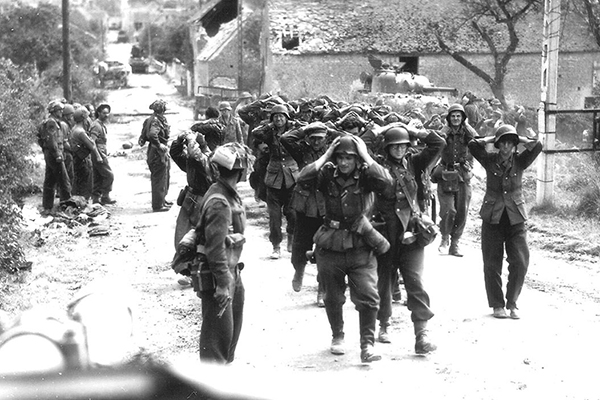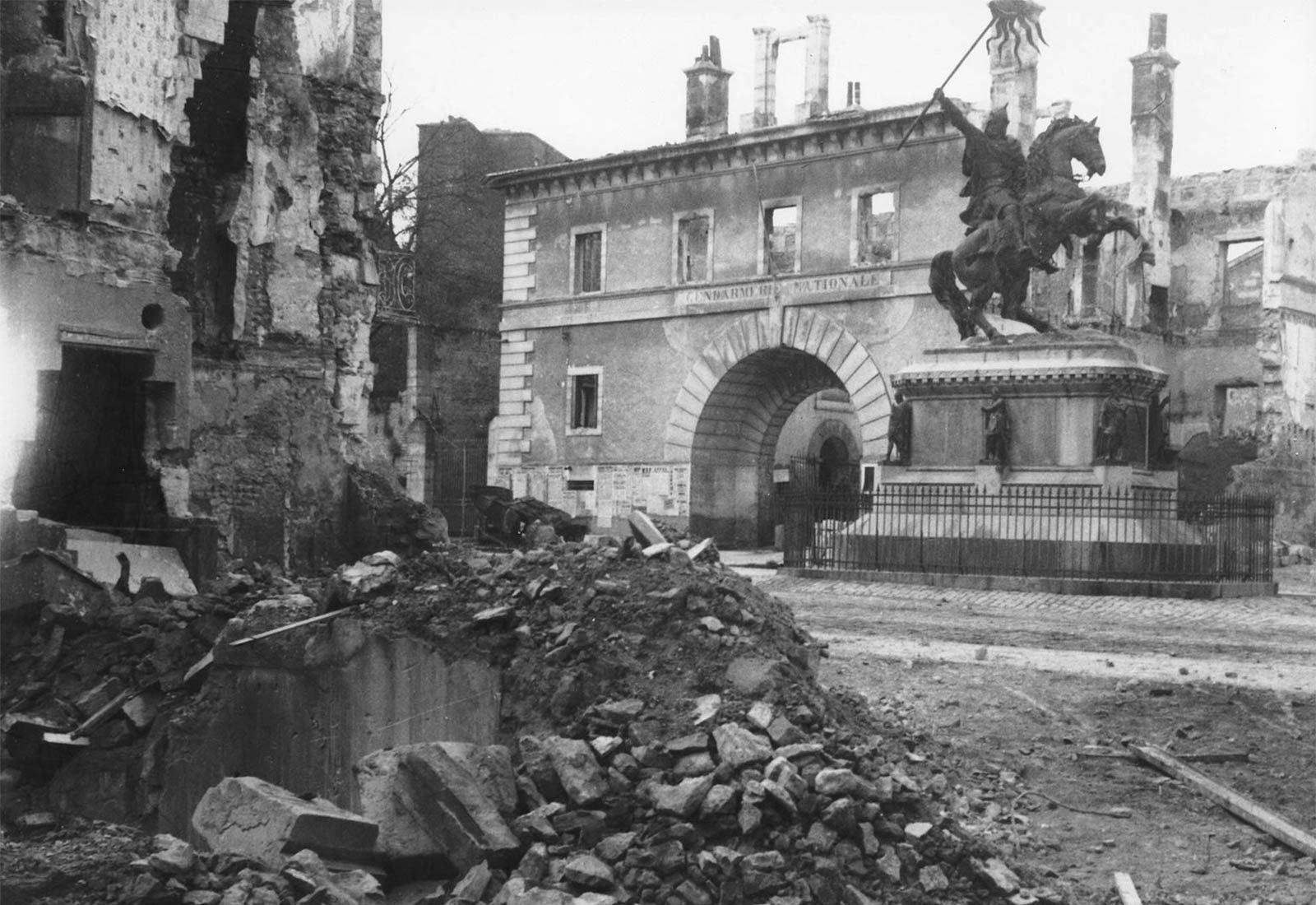Updated on 30 April 2021
Reading time: 2 minutes
Once Cherbourg was liberated (26 June), the unremitting British and Canadian struggle for Caen would lead to its tardy liberation (9 July), and the Americans could break out from Saint-Lô (25 July) and head for Avranches (1 August). This enabled the Americans to swing back east while British and Canadian forces pressed down south of Caen. A lethal entrapment closed upon the remnants of the German 7th Army and 5th Panzer Army in the final battle known as the ‘Falaise Pocket’.
THE CORRIDOR OF DEATH
When what little remained of Falaise was invested by the Canadians on 17 August, the German commander Von Kluge was sacked and shot himself. The final encirclement was ordered by General Montgomery: the Americans attacked from the south and west, the Canadians and Poles from the north, and the British from the north-west. By 21 August, the pocket had been sealed, at enormous cost. Overflying Typhoon pilots rocketing the remains could, it is said, smell the death of men and horses rising into their cockpits….

(…) THEY LAY DEAD IN TANGLED HEAPS
Desmond Scott, Typhoon pilot
Since D-Day, the German army had lost 450,000 men, of whom 160,000 were now prisoners. The Allies had suffered 200,000 casualties, of whom 37,000 were killed. Now all that remained was to liberate Paris and the rest of Europe….
